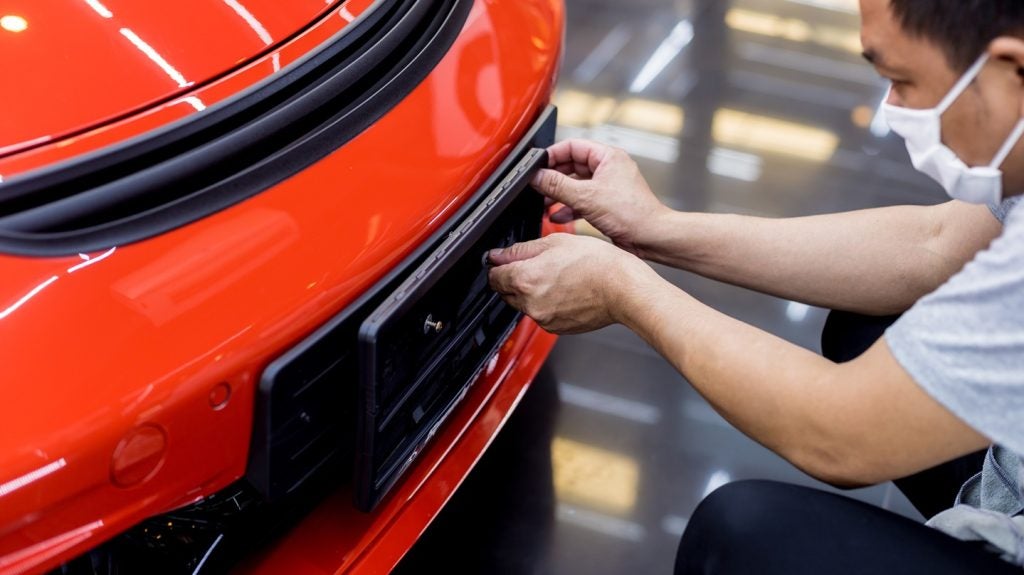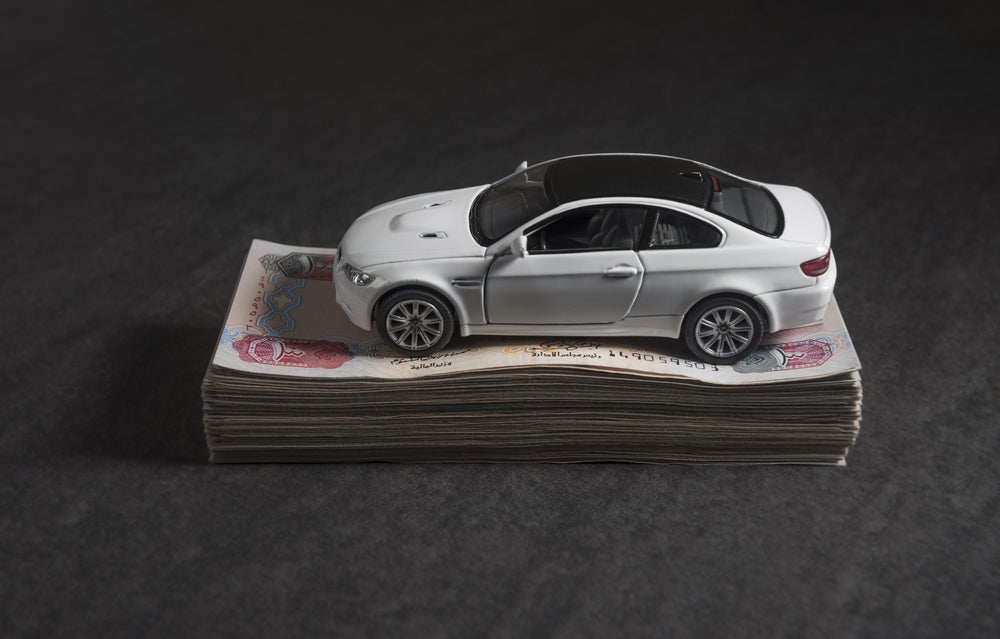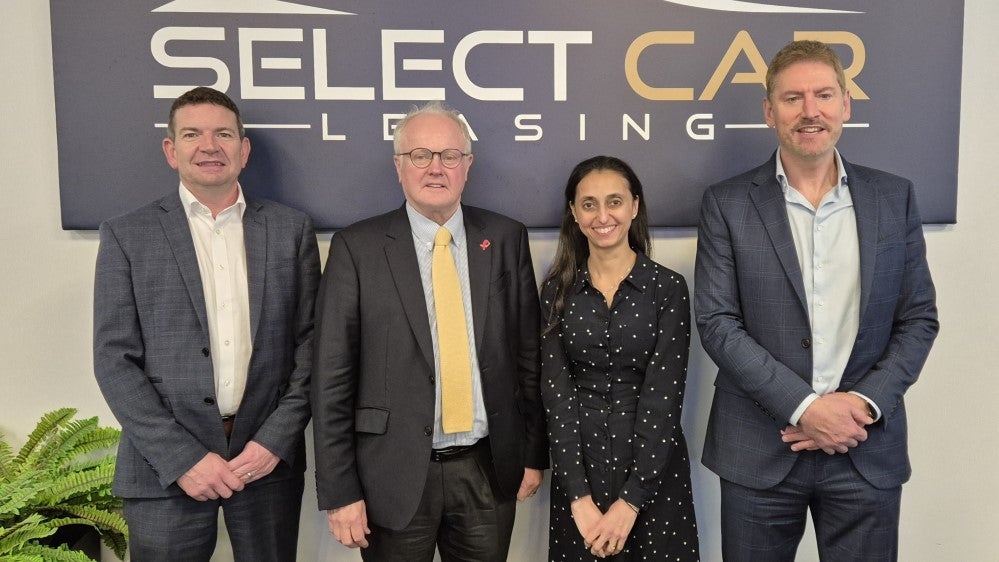
Glass’s product manager Vik Barodia tells Peter Johnstone the used car valuer’s updated guide has not only kept its dealership custom, but given the company the opportunity to leverage finance tie-ins.
Glass’s has published its guide to second-hand car valuations since 1933 and in August this year the guide was reconfigured. Called G2, it was met with initial hesitancy from dealers and suffered what Peter Minter, managing director of Moneybarn, termed "teething
problems".
Vik Barodia, director of product management and marketing at Glass’s, based in the company’s Weybridge headquarters in Surrey, reflected on how much the market has changed since the 1933 edition.
"There are many more manufacturers, there are many more models, different engines, different body styles, different transmissions, different trim levels," says Barodia. "The complexity of the car market is now so big that it’s almost impossible to value cars every month."
The shift to G2, he explains, is a move from the previous "hand stitching" of values from auction houses, a move "from art to science" based on statistical modelling. With enough observation data, Barodia says, the company can "do so much more" with its models.
This includes now separating trade and retail values, allowing for the two-month lapse of the resale process, based on 1.3 million trade observations and 4 million retail observations each year, or 95% of all data going through auction houses, says Barodia.
How well do you really know your competitors?
Access the most comprehensive Company Profiles on the market, powered by GlobalData. Save hours of research. Gain competitive edge.

Thank you!
Your download email will arrive shortly
Not ready to buy yet? Download a free sample
We are confident about the unique quality of our Company Profiles. However, we want you to make the most beneficial decision for your business, so we offer a free sample that you can download by submitting the below form
By GlobalDataOn the trade side, Glass’s is also collecting vehicle condition data – stratified by good, average and poor – measured against sale price for "a more accurate reflection of the market" which Barodia believes will benefit insurers and lenders: "The baseline from which all of those sectors operate is much cleaner. The underwriting should be a off a better baseline."
With G2, Glass’s aims to go beyond its core customers of dealers and insurers, and penetrate the consumer, fleet and financesectors. While businesses want a forecasting product to set leasing plans and quotations, says Barodia, gaining traction in finance will require provision of a credible alternative to car valuation providers already in the market "through a better baseline of G2 values and forecast values".
Online relaunch
Promoting G2 among customers, meanwhile, has seen Glass’s relaunch its online consumer brand glass.co.uk to create leads. The website has attracted a million unique visitors and entered the top 20 automotive websites in the past 10 months.
"Every person who comes to the site comes to value their car, to change their car or to buy a car," explains Barodia. Glass’s is now looking at harnessing that information to offer it to insurers, dealers, brokers and lenders "to use consumer activity to drive this growth in other sectors" and leverage consumer sector valuations within the finance sector.
Barodia explains Glass’s is harnessing the data for car brands to profile customer behaviour at set times before buying, and commercialise it.
The company can identify a customer’s interest in a model and its age, mileage, and also the customer’s retail behaviour and credit needs, and take it as a lead to a dealer or financer.
Glass’s is also considering partners for an aggregation service to purchase the leads outright. It also has two trials running with brokers to survey customer behaviour on the website and feed prime and subprime leads to credit providers based on information given by customers online.
As Barodia says, a new car purchase "doesn’t stop when someone values a car and it doesn’t stop when someone’s bought a car" and Glass’s wants to work with suppliers of the follow-on F&I, which the company refers to as "adjacencies".
"We are looking at penetrating those sectors, offering them multiple propositions focused around evaluations and a quality lead."
In the three-and-a-half years Barodia has been responsible for dealer turnaround, he hasn’t had as much exposure to finance funders or brokers as he would have liked.
"It would have been folly to chase other sectors when our baseline wasn’t as good as it could be," he says. "Now my role will be to work with our key accounts team and our sales guys, and meet lenders, financiers and insurers to help them understand how we can
be a better partner to them.
"I’m open to being contacted by any of these guys. I believe we’ve got a lot to offer. I’d like to spend more time understanding how to offer it. I’d like to hear first-hand what it is they’re looking for. It’s not going to be a case of ‘here’s a product, you should buy it’ – it should never be that way around."
Currently, however, Barodia is confident of what Glass’s offers funders and lenders, or any company which supplies vehicle finance, and faces the question of: what is the value of this vehicle?
If a finance provider questions a price it has been given by a dealer, and can’t qualify the quote because they operate by volume, says Barodia, "that’s where Glass’s Guide comes in" as a barometer for both dealer and funder to work with.
Alternatively, "if dealers are buying lots of stock, they’ll need money up front and, typically, again, it’s all about baseline value, the correct value of the car and that’s what funders use Glass’s Guide for.
"It’s also used for settlement of risk. If a funder has a customer or several customers, all with several amounts of finance against vehicles, then the funder’s going to need to manage the value of all those depreciating assets. How quickly are the assets going to get to a point where the customer owes more than the car’s worth? It’s important the right values are used and the right timeframes
are put around the finance conditions or the lending terms."
The 80-year landmark
Barodia admits "G2 w as a landmark," 80 years on from the very first edition and marked the end of a transition back to the name Glass’s after a period when the company traded as Eurotax Glass (Eurotax is Glass’s parent).
The return to the original name, says Barodia, formed "part of our strategy to become more embedded in sectors other than just dealers.
"People know the Glass’s name and I can’t think of another business, where the goodwill towards the brand is so powerful. Everyone wants to talk to Glass’s Guide.
"We want to capitalise on that, to build upon that goodwill. We a re Glass’s, and we are a national hero as far as our parent company is concerned."
And asked about those teething problems, Barodia admits the company received "a lot of calls", but is confident the move to a more involved model will prove worthwhile for the industry.
For example, instead of giving an approximate value of a model, the new guide will provide a range of the latest auction sale prices and a more-qualified average.
"We can actually start to interrogate why our values are as they are," he adds, saying such an approach both justifies the numbers provided and avoids the discrepancies inherent in only reporting the price of a car in ‘ready-to-retail’ condition.
Barodia says prices on cars up to three years old were typically being reported as 4% higher than actual auction figures, and as much as 7% higher on seven-year-old vehicles.
"There was a movement, from a perceived value of ready-toretail, to the new Glass’s trade value, which reflects what’s happening in the market. This trade value is the auction value. It’s what we expect the car to sell for at the auction, commensurate with its age and condition."
There was "a lot of feedback", about making the change, says Barodia, who believes customers have begun to understand what has changed and how it will help.
"Customers asked: ‘Which value should I use as a proxy to compare to the old Glass’s trade?’ And the answer would be the new Glass’s High because that is our new, near-perfect car value.
"To say there were teething problems is fair," concedes Barodia, although he believes it is unfair to say Glass’s has completely altered the way it values used cars. "We’ve continued to create values under the ethos of G2.
"But I can say, hand on heart, the number of calls we’re receiving querying our values today is lower than it was pre-G2, so that is a success story."
Stock supply
Barodia explains the transition has not lost any custom beyond that expected because of the depreciating number of dealers in the current market, particularly the small independents suffering from stock acquisition problems.
"We’re still feeling the effects of the scrappage scheme and poor conditions which meant that leases were being extended from three to four, or possibly five years. Cars that would normally come into the used car market after three to four years were just not comingin.
"Consequently, it’s become a lot harder to source good-quality, second-hand cars. The independent used car dealer, who has a business purely for feeding his family and keeping a roof over his head, cannot survive.
"We’ve lost no more customers than would be normal, due to economic factors outside our control. We have customers that flip-flop between us and our competitors and they change every year."
One of the things Barodia says he is trying to change is the notions of ‘we’ve always done it that way’.
"What we’re trying to do is make changes. The wind of change blowing through Glasses at the moment is rapid. Radar [Glass’s price-checking tool] was built and launched in 12 weeks, which is virtually unheard of.
"Spot pricing as a concept in the UK was a pretty unknown entity. Now spot prices are at 1,700% of [Glass’s] target for that product, which gives you a flavour of how quickly it’s been adopted by the dealer sector.
"The insurance sector is now really keen on spot pricing, because it helps with claims settlement: ‘Here’s what the value of that car is, in today’s market, for where that person lives’.
"What we’d like to do is find ways to propagate spot pricing through the finance sector, through the lending sector, and through the fleet sector; and make spot pricing a big USP.
"It’s not saying, there are three cars out there each at £10,000, therefore the spot price is £10,000, because it may be that two of those cars are overpriced by a significant amount. We could look at trading history and the depreciation curve, and say the spot price for that particular car is £9,400."
Looking to 2013, Barodia is particularly buoyed by spot pricing. "There are many ways in which that could be used, and it’s fair to say we haven’t explored them all yet," he says. But it is the application of spot pricing in forecasts which he believes will be "a big driver for growth" alongside offering a "basket" of contacts of customers interested in specific car purchases and in need of credit to
sell to ‘adjacent’ suppliers.
"There are four principle initiatives at Glass’s next year," says Barodia: "One is to propagate spot pricing, two is to drive consumer business, three is to get into adjacent sectors, and the fourth one is all about data. And the data is G2 and the next thing on data is forecasting."







